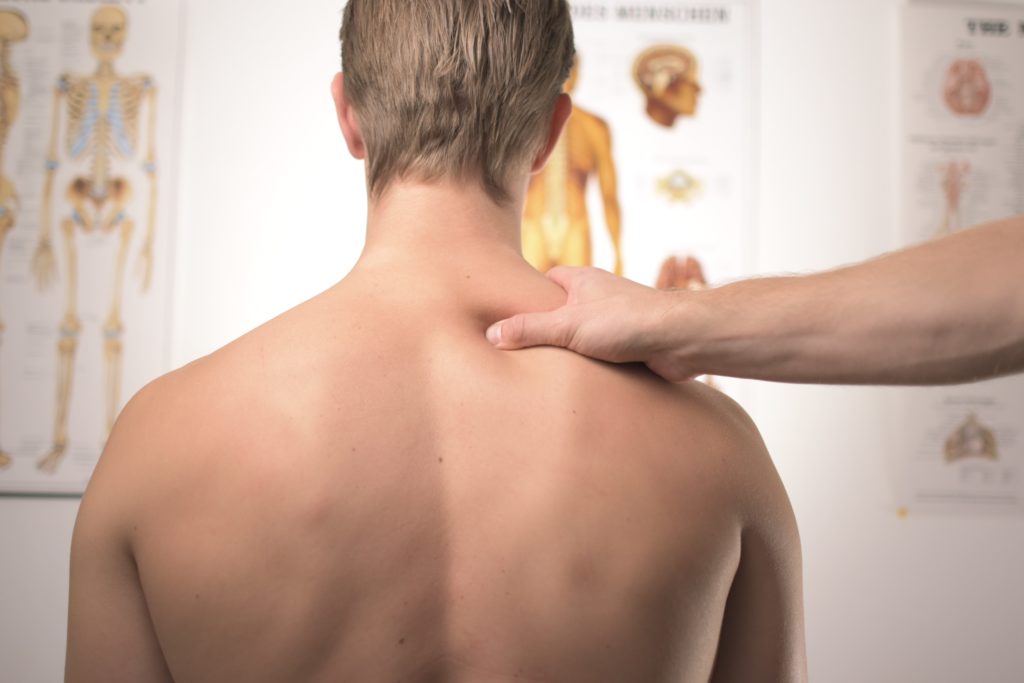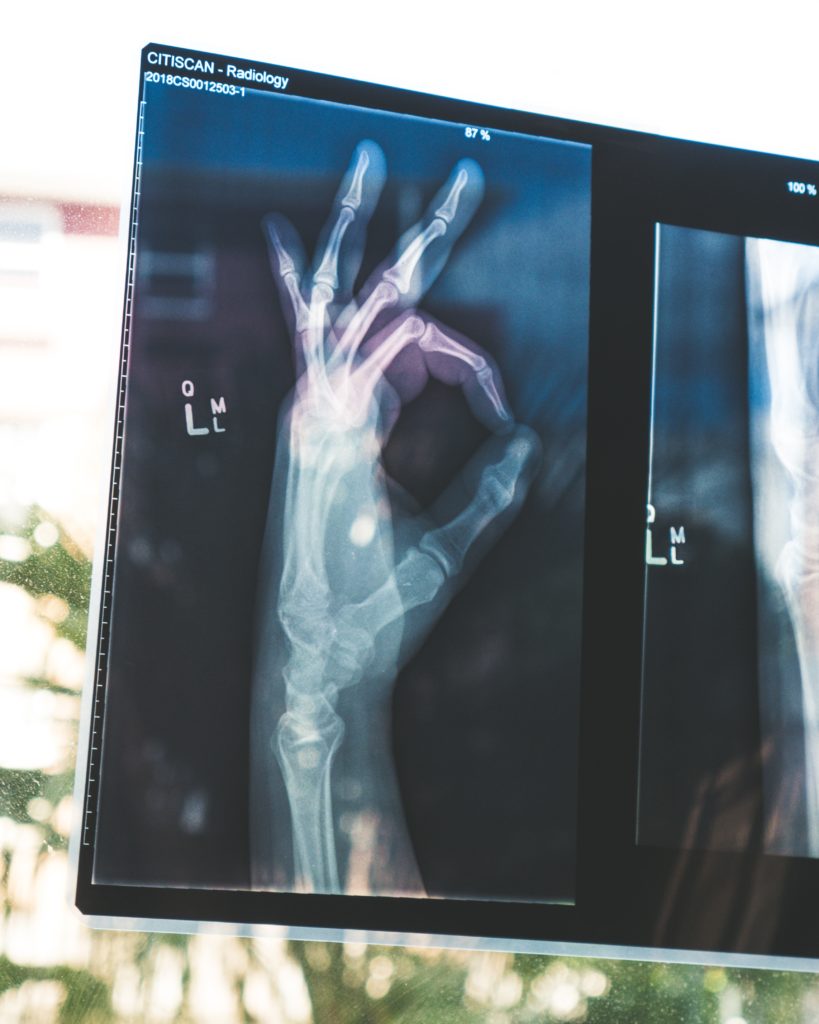So you’ve recently scheduled your first chiropractic visit. Having never been to a chiropractor before, you aren’t sure what to expect. You’ve seen the YouTube videos, heard many stories, both good and bad, with everyone seemingly having a unique experience with a chiropractor. In this post I’ll outline what you can expect on your first chiropractic appointment.
The following article outlines a typical new patient exam at Mile High Spine & Sport. Most evidence based chiropractic clinics will follow a similar plan for a new patient visit.
History (10-15 minutes)
Once in the treatment room, the doctor will ask you a series of questions related to your area of complaint. Questions asked will include the location of pain and if there are any referred symptoms. Referred symptoms refer to pain, numbness, tingling, and/ or weakness that may be stemming from the main area of pain. The doctor will ask for a detailed description of how the pain came on, whether it happened in a single traumatic incident, or if it came on more gradually over time. The doctor will ask which activities specifically make the pain worse (i.e. sitting vs. standing, bending forward, turning, lifting an object off the floor, etc.) and also if there’s anything specific that makes the pain better (heat vs. ice, Advil, relieving postures or positions, etc.). The doctor will ask about your treatment history – any past injuries or surgeries, and whether any imaging (X-ray, MRI, CT) have been taken recently, so be prepared with this information if necessary.

A doctor who treats the entire body and not just the site of pain will ask you a variety of other questions regarding your overall health and lifestyle choices. The doctor will ask about your diet because the foods we eat can affect the way the body experiences pain and recovers from injury. They will ask about any medications or supplements you are currently taking, as well as what you like to do for exercise because activity modifications may be necessary while you recover from your pain. The doctor will ask about your sleep quality as sleep is the most fundamental human function necessary to heal. Additional questions will be asked regarding any drug/ alcohol/ or tobacco use, as abuse of any of these can magnify the inflammatory pain response and slow healing. Interview over! Now the doctor has a clear picture of your current chief complaint, your past medical history, and knows the kind of lifestyle you are living.
Exam (15-20 minutes)
Vladimir Janda, a renowned Czech physician, always taught that ‘Time spent in assessment, will save time in treatment.’ With this in mind, chiropractors like to perform detailed, in depth exams to determine what specifically is causing your pain or dysfunction. It’s important to assess the entire body and not just the site of pain, because dysfunctions elsewhere in the body may be contributing to the site of pain. For instance, a shoulder problem may be related to poor function of the hip on the opposite side of the body, a chronic knee issue may be stemming from poor ankle mobility on that side, or low back pain may be related to diminished mobility and/or stability in the hips.
The doctor will start by taking your vitals, which includes blood pressure, heart rate, respiratory rate and body temperature. More specific exams such as an eye exam, cranial nerve exam, ear exam, lung exam, cardiac auscultation, abdominal exam, and nasal exam will performed on an as needed basis.

Next, the doctor will perform a comprehensive neurologic exam. They will test your deep tendon reflexes (think patellar knee jerk as a little kid), muscle testing, and sensation testing of your skin. These tests are meant to test the integrity of your nervous system. Other neurologic tests include single leg balance testing, your ability to stand with the eyes closed, the ability to sense vibration in your fingers and toes, and even your ability to distinguish smells such as coffee and cinnamon. The purpose of these tests are to screen for any pathology that is damaging your central nervous system and may include a disc herniation, spinal or brain tumor, or disease process. The vast majority of neurologic exams come up as normal, and the vast majority of positive findings in a neurologic exam are related to non-pathologic processes that can be corrected in the chiropractic office.
The next portion of the exam is the orthopedic exam. These tests help the doctor figure out exactly which tissues are injured, i.e. is it the meniscus, ACL, PCL, joint, or muscle? Orthopedic exams are meant to elicit pain and will most likely recreate your pain. Do not be worried about these tests damaging your tissues, they are only performed once and will help the doctor figure out the best course of treatment for you.
The final portion of the exam will be the functional movement exam. The doctor will take you through a series of functional tests such as a SL squat, SL balance, lunge, push-up, active range of motion, passive range of motion, and muscle testing among many others. These tests are meant to recreate the demands of daily living and the basic requirements for healthy human movement. When a dysfunction is found in the functional movement exam, the doctor is given valuable insight into which specific exercises will be beneficial for you.
Will X-rays be taken as part of the exam?

At our clinic, we do not take X-rays on the majority of our patients. Most presenting problems can be diagnosed and treated without the use of X-rays. While radiation exposure during an X-ray is minimal, we still opt to only order X-rays or advanced imaging when absolutely necessary. Minor anomalies and asymmetries will be found on the majority of X-rays, but these issues rarely correlate to pain and can often confuse the patient into thinking they should have pain because of what the image shows
Review of findings (5 minutes)
After completing the exam, the doctor will have a solid idea of what is driving the pain and the best course of treatment. The doctor will suggest which tissues are damaged and what other contributing factors are adding to the pain or dysfunction. Additionally, the doctor will explain the different treatments they want to use, including potential adverse side effects such as soreness or mild bruising for 1-2 days after treatment.
Treatment (20-25 minutes)
With the history, exam, and review of findings complete, the doctor can start the treatment. Treatments will address the joints, nerves, muscles, tendons, ligaments, and any movement compensations you may have. The most commonly utilized treatments used at our clinic include:
Active Release Technique (ART) – considered the gold standard in soft tissue therapies.
Dynamic Neuromsucular Stabilization (DNS) – functional movement protocol based on principles of neuro developmental kinesiology.
Instrument Assisted Soft Tissue Manipulation (IASTM) – the use of metal tools to decrease tone of tight and tender muscles.
Acupuncture – needling technique used for thousands of years to treat pain and organ dysfunction. Acupuncture is based on needling along specific ‘meridian’ pathways that have specific uses for healing in the body.
Kinesiology taping – special type of tape that provides support to joints and muscles without causing disuse atrophy of the muscles as is the case with traditional orthopedic braces.
Cupping – effective decompressive technique which lifts the skin away from the muscles allowing increased blood flow and lymphatic drainage at the site of treatment.
Internal medicine blood testing – functional medicine blood testing to assess for specific nutrient deficiencies, digestive irregularities, and hormonal imbalances that can be an underlying cause of pain and chronic disease.
A typical treatment plan at our clinic is 2x/ week for two weeks, 1x/ week for two to four weeks, once every other week for 2-4 weeks, then once a month for maintenance care if the chief complaint pain is resolved. Most patients feel significant relief after 6-8 visits. Additionally, most patients feel even stronger and more flexible compared to their first visit because of the exercises they’ve been given at our clinic.
Now you know what to expect in your first chiropractic visit, hope to see you soon!
Post written by Dr. Riley Kulm, DC MS. Check out Dr. Riley Kulm’s bio here.


